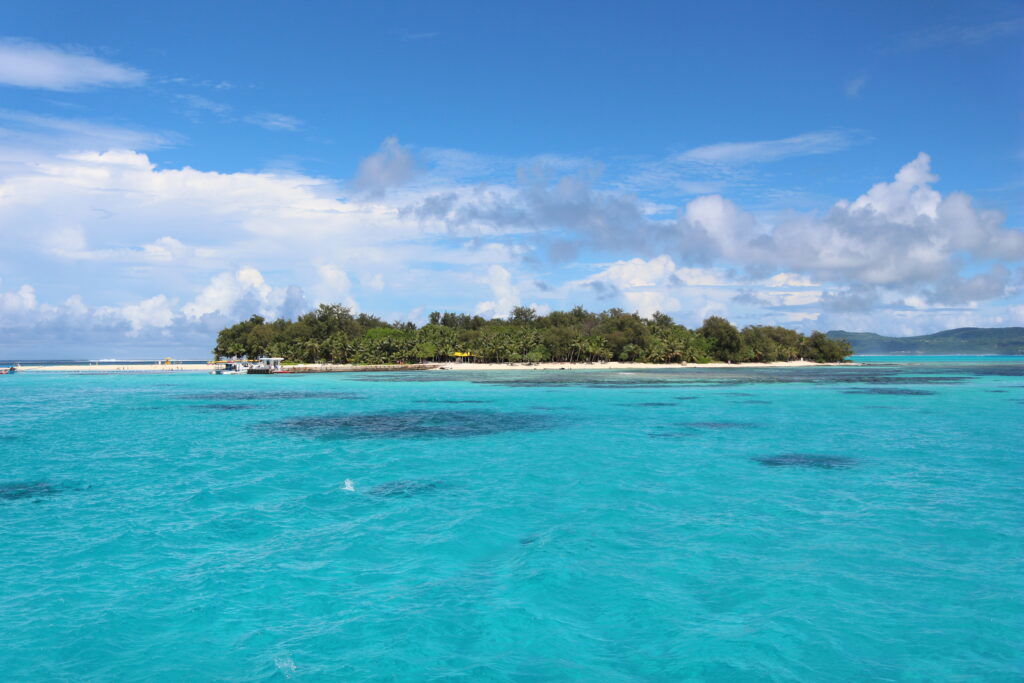
THE birds are what actually make Managaha an unforgettable experience for tourists, according to a bird biologist from Tinian, Kaeli Swift, Ph.D.
Swift was among those who reacted to the concerns raised by local architect Herman B. Cabrera, who said the overpopulation of black noddy (Anous minutus) and brown noddy (Anous stolidus) is disrupting Managaha’s ecosystem and “has become a pest” as well as “making Managaha unsanitary for visitors.”
In an email interview on Wednesday, Swift said Managaha “is unquestionably one of the most beautiful places in the world.”
But what makes Managaha special, Swift said, is not its beach — “which is in a constant state of change anyway due to erosion.” If tourists want white sand beaches with calm, shallow waters, they can go to Micro Beach or Paupau Beach or simply enjoy the views and guest services from one of the many beachfront resorts.
What makes Managaha special, she said, is its cultural and ecological value, which is like nothing else in the Marianas. “Stepping foot onto the island is like stepping into another world — a wild world. Mr. Cabrera thinks this is to the island’s detriment, but it is its strength,” she said.
Swift, who has visited and camped on Managaha countless times over the years and brought numerous off-island visitors, said she has watched international tourists — especially children — gleefully observe noddies collecting nesting material or respond with “awwws” as they point out fluffy tern chicks nestled in the branches above.
“The birds are what make Managaha an unforgettable experience, and there are ample untapped ways to embrace and celebrate this,” Swift said.
She explained that across the world, ecotourism generates billions of dollars a year. So, instead of thinking of Managaha as a pseudo resort-island, “why not embrace what it is: a hotspot of cultural heritage and charismatic Marianas wildlife — from seabirds to colorful egigi to glimpses of rare sasangat — all against a backdrop of beautiful azure water and white beaches?”
She suggested installing signage to educate visitors about the role seabirds play in island ecosystems, their contribution to snorkeling experiences, and their broader ecological and cultural value.
Swift said that instead of “just another day at the beach,” tourists would have the opportunity to leave the island having learned and experienced something only the CNMI — only Managaha — can offer. “It would be a truly unique experience,” she said.
Bird poop is good for the ecosystem
Responding to Cabrera’s claim that bird droppings make Managaha unsanitary for visitors, Swift said seabird droppings “are a crucial part of nutrient cycling,” and seabirds are considered “ecosystem engineers.”
She said the ratios of nutrients such as nitrogen and phosphorus in their droppings have been shown to benefit both terrestrial vegetation and soils, as well as coral health.
“In fact, studies comparing adjacent islands where seabirds are either present or have been eradicated by rats show that the corals off seabird-rich islands recover more quickly after bleaching events than those without,” she said.
Likewise, Swift said the entry of seabird droppings into the water stimulates the growth of plant food that many reef fish, such as parrotfish, eat. One study, she added, found that the size of reef fish can increase by 52% thanks to seabird poop.
“Bottom line: Whether you are a recreational snorkeler visiting the CNMI or a local spearfisherman, the health and beauty of our reefs is tied to our seabirds — specifically their poop. The ingredient may be ugly, but it’s essential for beautiful reefs,” she said.
Swift added that someone may believe the island is overpopulated with birds because they don’t like them — but that doesn’t mean the birds are ecologically overpopulated.
“For a biologist like me, ‘overpopulation’ has a specific meaning: the point at which there are more individuals than the environment can sustain,” she said.
In a wildlife context, evidence of overpopulation might include disease outbreaks, decreased egg production, declining body condition among birds, or habitat loss. “As a visitor to the island with a background in ecology, I have not seen these signs,” she said.
Resident’s view
In a separate interview, Cabrera said that as local residents, “we all know that Managaha Island is a sanctuary for marine life as well and must be protected to balance the ecosystem.”
However, he asked, “How can the variety of fish around Managaha Island multiply when the birds — who are overpopulated — are actively eating the small fish?”
He said the birds remain on the island because of the abundance of small fish and the lack of human presence to disturb them. He said bird droppings carry “very destructive toxic bacteria and viruses — microorganisms that cannot be seen with our own eyes — which may be present in the rainwater reservoir.”
Cabrera added that the black and brown noddy also eat the fresh sprouts of banana leaves, which hampers the growth of the few banana trees on the island. This, he said, negatively impacts the natural landscape and the island’s healthy, tropical vegetation.
He proposed a solution that would not harm the birds: building simple tropical villas using new, innovative technology such as quiet solar panel systems to run air conditioners and provide lighting.
“We have new, simple sewage technology that can support a cleaner system for these villas,” he said. “There’s plenty of space on the southwest side of Managaha to build this type of development.”
According to Cabrera, the presence of people staying on the island would discourage the birds from settling there, thus restoring ecological balance.
“In other words, people can co-exist with the natural environment — such as other beneficial birds — and not this type of destructive bird,” he said.
He believes this would also bring in additional revenue from villa rentals alone. “Villa-type rental businesses in Tahiti, Fiji, and the Maldives are prosperous and provide steady income,” he said.
“Perhaps part of the revenue can be used to hire environmentalists to watch the island 24/7 to protect our health, safety, and environment. Our government needs to do something to save our only valuable nearby recreational island,” Cabrera said.
He added that there have been various efforts to improve the CNMI’s tourist destinations, but questioned: “How can we improve our islands for tourists when the government is not proactive in doing its main responsibility?”
Cabrera urged government agencies to stop procrastinating and to address existing issues. “We should not wait until it’s too late to improve our islands. I am willing to assist with these types of issues because we are all affected by our economy. We need more and more tourist amenities — how can tourists come if we don’t offer more pleasing and enjoyable experiences?” he asked.











